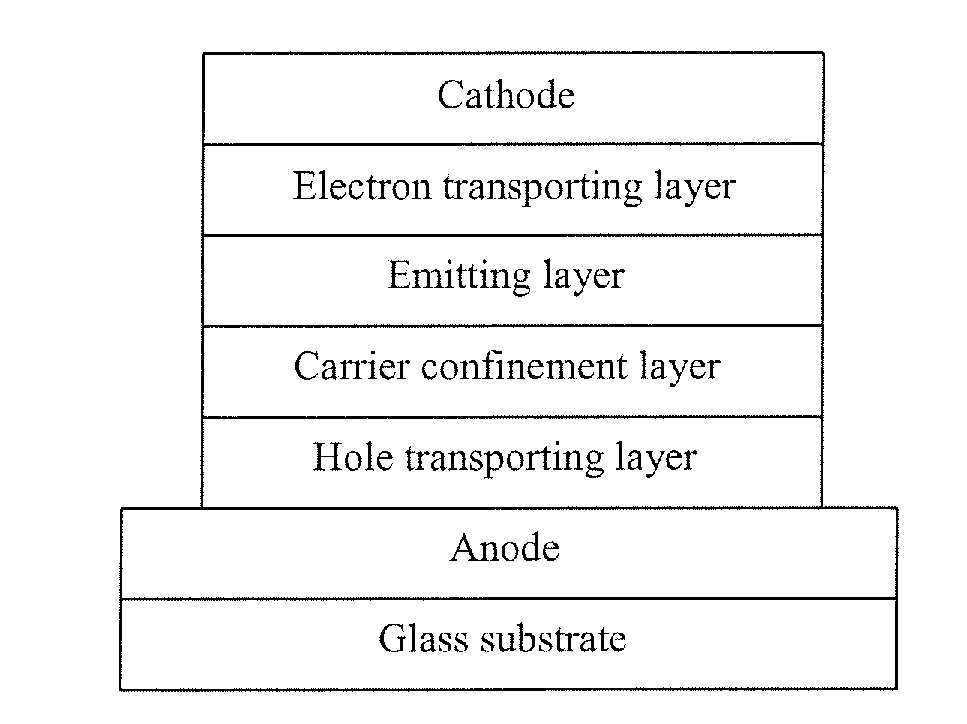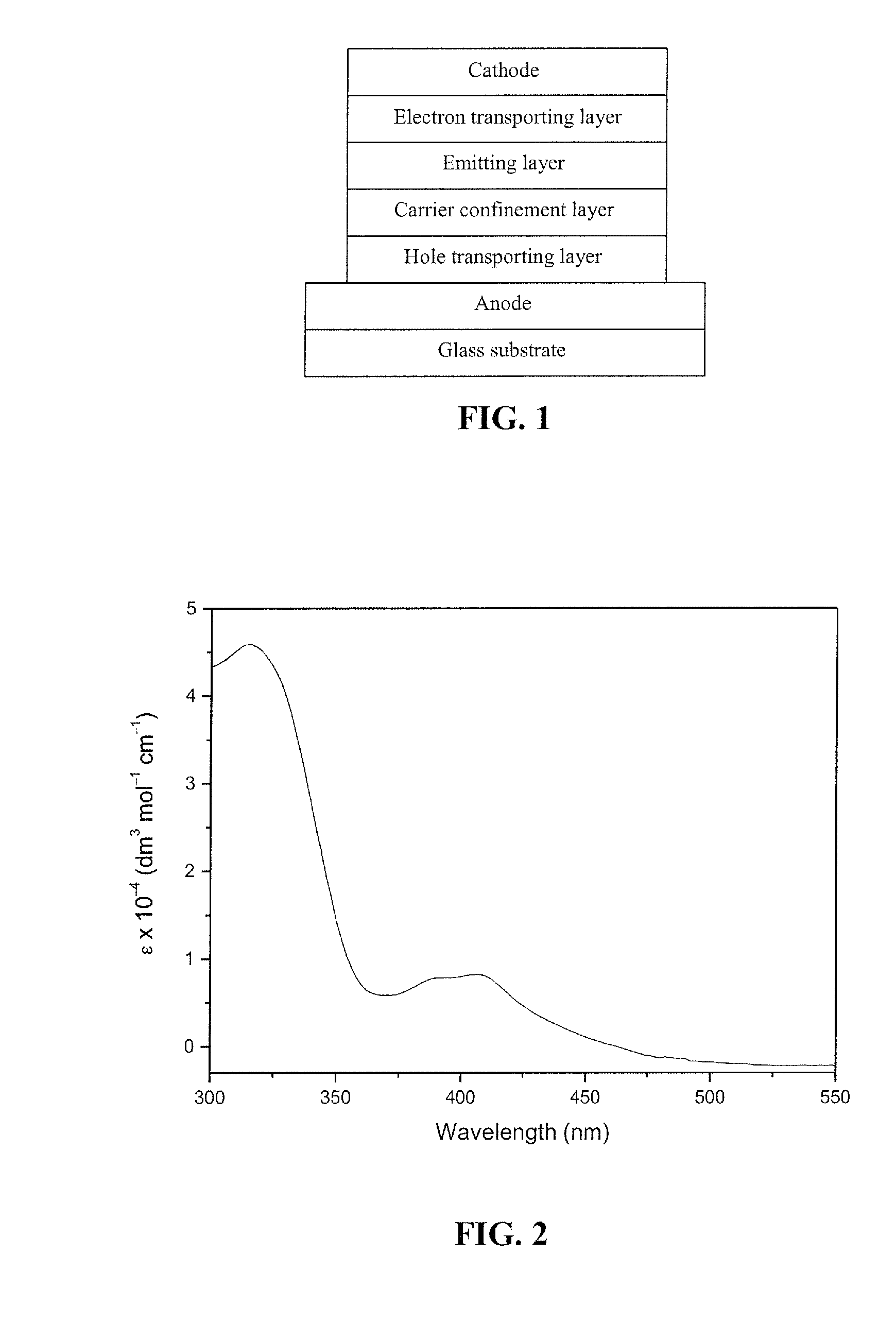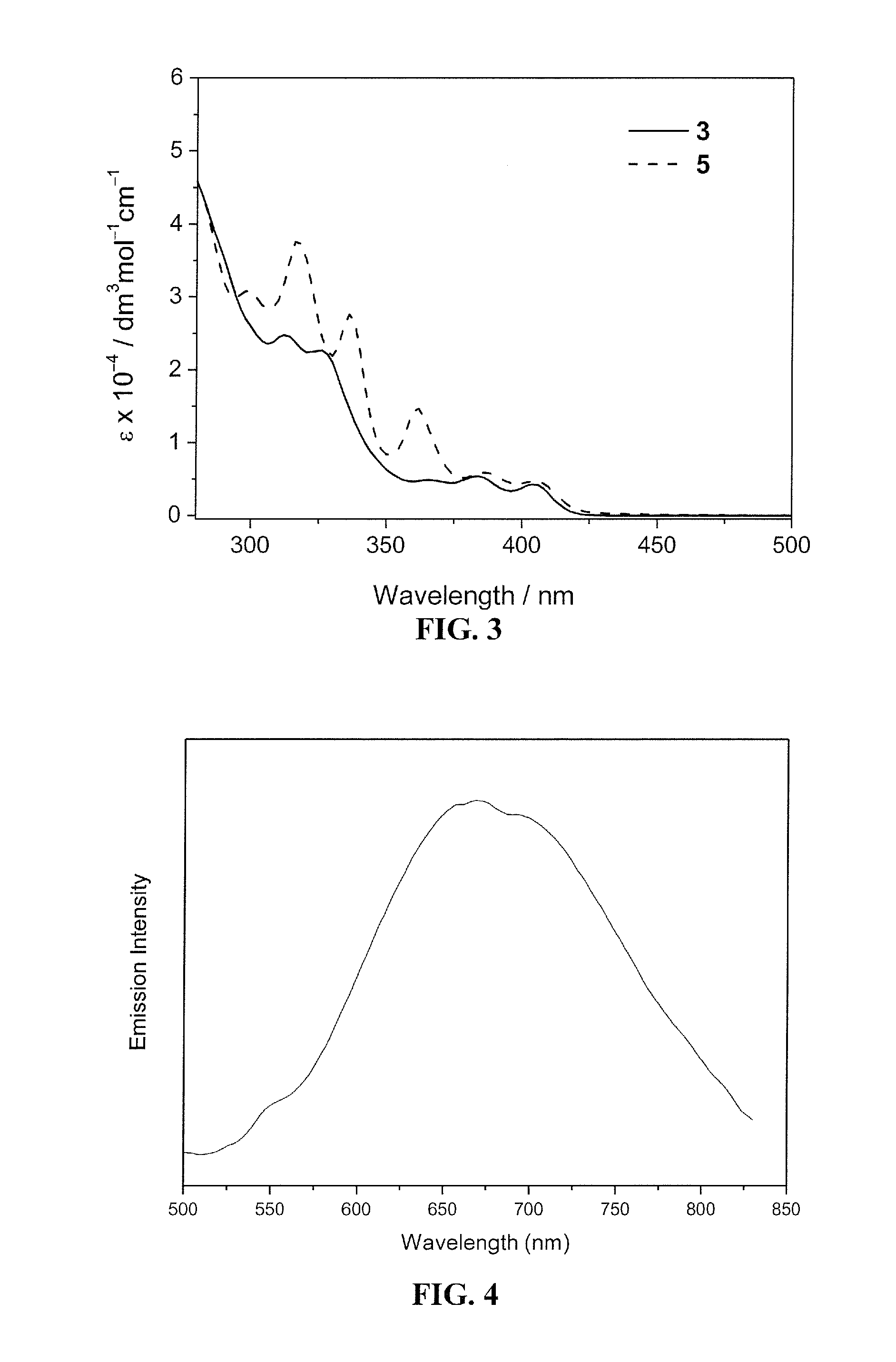Luminescent gold(III) compounds for organic light-emitting devices and their preparation
a light-emitting device and organic technology, applied in the direction of gold organic compounds, luminescnet screens, natural mineral layered products, etc., can solve the problem of low efficiency of such a single-layer device, and achieve the effect of improving current and power efficiency
- Summary
- Abstract
- Description
- Claims
- Application Information
AI Technical Summary
Benefits of technology
Problems solved by technology
Method used
Image
Examples
example 1
General Synthetic Methodology
[0064]
wherein:[0065](a) R1 is selected from, but not limited to, alkylalkynyl, substituted alkylalkynyl, arylalkynyl, substituted arylalkynyl, heteroarylalkynyl, substituted heteroarylalkynyl and (C≡C)nR13, where (C≡C) represents a carbon-carbon triple bond, n=1-8, and R13 is selected from alkyl, aryl, substituted aryl, heteroaryl, substituted heteroaryl and tri(alkyl)silyl;[0066](b) R2-R12 groups are each independently selected from, but is not limited to, hydrogen, alkyl, alkenyl, alkynyl, alkylaryl, aryl and cycloalkyl with one or more alkyl, alkenyl, alkynyl, alkylaryl, cycloalkyl, OR, NR2, SR, C(O)R, C(O)OR, C(O)NR2, CN, CF3, NO2, SO4, SOR, SO3R, halo, aryl, substituted aryl, heteroaryl, substituted heteroaryl or a heterocyclic group.
As can be appreciated by those skilled in the art, the position, structure and size of the substituents R2 through R12 and any substituent included on R1 are chosen to avoid steric inhibition of Au—C bond formation. In ...
example 2
Synthesis and Characterization
[0067]Compounds 1, 2, 7 and 11 have been reported in the literature [Wong et al. Chem. Commun. 2906-2908 (2005); Wong et al., J. Am. Chem. Soc. 129, 4350 (2007)]. Compounds 3-6 and 8-10 were synthesized by a similar methodology, in which the tridentate ligands, 2,5-F2Ph-ĈN̂C and FĈN̂CF, and the precursor compounds, [Au(2,5-F2Ph-ĈN̂C)Cl] and [Au(FĈN̂CF)Cl], were respectively prepared according to modified literature procedures [Kröhnke, F. Synthesis, 1 (1976); Wong, K. H.; Cheung, K. K.; Chan, M. C. W.; Che, C. M. Organometallics 17, 5305 (1998)].
example 3
[0068]The characteristic spectroscopic properties of compounds 1-11 are as follows:
[Au(ĈN̂C)(C≡C—C6H4—N(C6H5)2-p)] (Compound 1)
[0069]Yield: 80%. 1H NMR (400 MHz, CD2Cl2, 298 K, relative to Me4Si): δ 7.01-7.07 (m, 4H, C≡CC6H4 and NPh2), 7.10-7.13 (m, 4H, NPh2), 7.26-7.30 (m, 6H, phenyl of ĈN̂C and NPh2), 7.40 (dt, J=7.3 and 1.2 Hz, 2H, phenyl of ĈN̂C), 7.46 (d, J=8.7 Hz, 2H, C≡CC6H4), 7.54 (d, J=8.0 Hz, 2H, pyridyl of ĈN̂C), 7.62 (dd, J=7.3 and 1.2 Hz, 2H, phenyl of ĈN̂C), 7.91 (t, J=8.0 Hz, 1H, pyridyl of ĈN̂C), 8.03 (dd, J=7.3 and 1.2 Hz, 2H, phenyl of ĈN̂C). Positive FAB-MS: m / z 694 [M]+. IR (KBr disc): 2149 cm−1 ν(C≡C). Elemental analyses: Found (%): C, 62.34; H, 3.55; N, 3.86. Calcd for C37H25AuN2.H2O: C, 62.36; H, 3.82; N, 3.93.
[Au(2,5-F2-Ph-ĈN̂C)(C≡C—C6H4—N(C6H5)2-p)] (Compound 2)
[0070]Yield: 28%. 1H NMR (300 MHz, CD2Cl2, 298 K, relative to Me4Si): δ7.06 (m, 4H, C≡CC6H4 and NPh2), 7.10 (d, J=8.7 Hz, 4H, NPh2), 7.24-7.30 (m, 8H, phenyl of ĈN̂C and NPh2), 7.36-7.43 (m...
PUM
| Property | Measurement | Unit |
|---|---|---|
| work function | aaaaa | aaaaa |
| work function | aaaaa | aaaaa |
| chemical structure | aaaaa | aaaaa |
Abstract
Description
Claims
Application Information
 Login to View More
Login to View More - R&D
- Intellectual Property
- Life Sciences
- Materials
- Tech Scout
- Unparalleled Data Quality
- Higher Quality Content
- 60% Fewer Hallucinations
Browse by: Latest US Patents, China's latest patents, Technical Efficacy Thesaurus, Application Domain, Technology Topic, Popular Technical Reports.
© 2025 PatSnap. All rights reserved.Legal|Privacy policy|Modern Slavery Act Transparency Statement|Sitemap|About US| Contact US: help@patsnap.com



